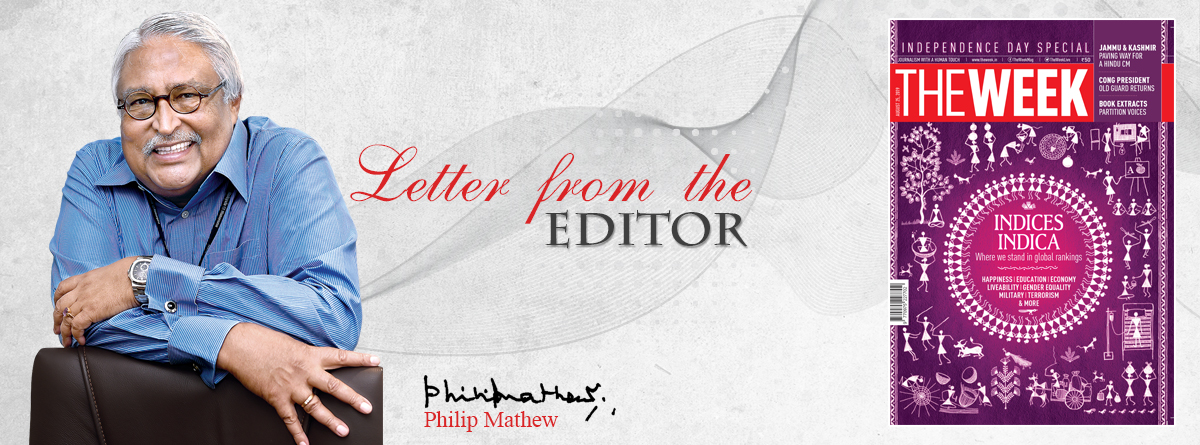I AM ALMOST as old as India. Free India, that is. We were born 55 days apart, and I am the younger one. And, it amuses me no end to listen to the two slogans that India now rallies to: “Nothing happened in 70 years” and “Down with academicians”. We all have our politics, and we must. We look at the world with glasses tinted and tainted with experiences and perception. That is understandable, too. But, what sort of a democracy would we be if we were to forget our past or to be as similar as cars and cookies that come off a production line?
Looking back from where I stand, I have this to say to India’s youth: You will travel farther than your parents have. Your reality will comprise concepts they cannot even dream of today. But, please do not forget the vast distances that their generation trekked to make your day in the sun possible. When you celebrate the GSLV Mk III that thundered into space with the 3,850kg Chandrayaan-II payload, don’t forget the humble sounding rocket that took off from Thumba in 1963 with a 70kg payload. A lot has happened since 1947, but the facts appear only to the observant. There are those who see, and then there are those who observe. Which group would you like to belong to?
This issue of THE WEEK is our annual Independence Day special, and it is a gift to the observant. We have attempted a stock-taking of where we stand today on various global indices, so that we can be clear on the distances we have to travel to be world-beaters. Some indices show a slow and steady rise, some have seen us slip and others have ridden a roller coaster. It is a data story, and it is as vibrant as the Warli painting on cover by Assistant Art Editor Binesh Sreedharan.
In the opening article, Chief Subeditor Navin J. Antony has paid tribute to a colossus on whom India’s data story rests—Professor P.C. Mahalanobis. And, he is the best illustration for why modern India’s contempt for academics and singular adoration for muscle is misplaced.
As I write this letter, India is being ravaged by water. Assam, Karnataka, Maharashtra… and my own state are fighting the flood resolutely. We read stories of rescue workers and volunteers risking their lives in the raging waters. God bless them and their large hearts. But, our response to floods can and should go beyond the muscular, as Mahalanobis illustrated in an article in Sankhya, the Indian journal of statistics, in 1940. Titled ‘Rain storms and river floods in Orissa’, the article is a gist of the flood studies he undertook in the “deltaic area in the province”. His study resulted in the building of the Durgapur Barrage on the River Damodar in West Bengal in 1955 and the Hirakud Dam on the River Mahanadi in Orissa in 1957. Can we today put a price on the property and the thousands of lives saved by Mahalanobis’s academic genius?
While I am on the topic of body and mind, please join me in welcoming a new columnist into our pages. Actor Swara Bhaskar will open her innings next week. About a decade ago, I told our then senior special correspondent in Kolkata, Tapas Ganguly, that he had a rare record in THE WEEK. To the best of my memory, he and daughter Haimanti were the only dad-daughter duo with bylines in the magazine. Dearest Tapas, Swara’s writing for us adds another duo to that list. Her father, Commodore C. Uday Bhaskar, has added gravitas to our pages many times with his insightful pieces on defence and strategic affairs.


